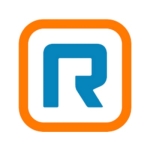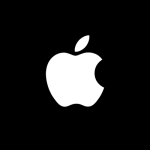What is most valuable?
The short name for the solutions is called PaaS for SaaS. It's one of those names that roles off the tongue, but is not as east to type. Really what it is about is giving people access to the development tools on a cloud platform, so that they can actually extend their applications and have that extension hosted in the cloud the same way that the applications that they've started with are.
How has it helped my organization?
What's happened over the past few years is that people have really bought into the idea of moving to the cloud. One of those benefits of moving to the cloud is that you can't change it, therefore everybody is on the same release, the same version. It's easier to maintain. It's cheaper, all of those things.
Actually, what people want to do is to put things that are relevant to their organization, the things that are different for them, into those applications. There is this, "thou can't change it," but actually we want to. What has happened now is that Oracle have made their development tools, the same tools that they've used, available for you in the cloud. You can build your extension and then integrate the two. Which means that, you haven't changed the application, but you have been able to extend the functionality.
One of the things that we're working on at the moment is we're building an application to maintain an organization's need for immunization. We've got customers who need it for their staff today, we've got customers who are charities, who might need it in an emergency. We've identified immunization as something that people need. That's quite interesting, because you can have it in the system just as a requirement, so in the same way you might say, "oh this person needs a bachelor's degree in science". You can say, they need immunization against swine flu or something. But, actually you need to be able to manage a program. How do you do that? How do you get a whole team immunized? How do you deal with the period of time that they are valid for, etc.? We're building using the PaaS component, an extension application for immunization. It's allowing people to do some of their front office needs in their back office applications. It's a very powerful way of moving forward.
What needs improvement?
Oracle thought a lot about the integration with their products with their wider portfolio of products, their own premise applications. That's fine, where people are using a very straightforward integration but more and more you see people that have got a landscape that no one had considered, or it's their first time with Oracle and the rest of that portfolio is very, very different.
There is lots of different things that people want to integrate with and some of that needs to be improved. There needs to be more integration points, more APIs. The obvious ones are all there and they are all catered for, but for almost every customer, you find something new. One of the great things about cloud is these come along very quickly once they've been identified.
For how long have I used the solution?
The original review was written in May 2015, and some of the functionality of the integration has improved, for instance there are no several APIs into HCM which make it much easier.
What do I think about the scalability of the solution?
That's one of those great things about cloud, and I don't want to sound like a cloud salesman, but scalability isn't an issue. You're paying for what you use, and therefore if you want to use more, you just pay more for it. There isn't an issue about, "I've got to start off knowing where I'm going to get to". I can try something out, I can scale that out, I can build on it, I can continue to build. It's like having the most ginormous plots of land possible, and then being able to extend my building as much as I need to.
How are customer service and support?
On the PaaS for SaaS side, where I would need help from Oracle occasionally is what are the components that I need. Actually that's more from a pre-sales point of view rather than from a post-purchase support stance, but that's very easy to get. It's very easy to go to Oracle and say, "I'm thinking of doing this, which are the components that are I need, and how can I work with that?" On the actual support side, we do use that a lot for the application, but when you're building the extension yourself, then you're less likely to be using technical support.
Which solution did I use previously and why did I switch?
The way that we work is we try not to look at the gaps at the very beginning. A customer says, this is what we need, this is our back office and we've chosen Oracle to do that. We try not to get over excited at the beginning about how we could possibly take that forward later. Let's move them to cloud, let's get them to get those advantages straightaway. Then very quickly you start saying, well what things are still slowing you down? What are the manual processes that are happening in your organization?
You know the word "manual" is the big trigger. They say well, we're still doing this on a spreadsheet, and we're still doing this. I just send emails out to these list of people, where I say, okay, that's an area where I want to take it and automate it, and that's where I want to extend my application.
What about the implementation team?
Onboarding is quite an interesting point, and I'll talk more about the applications themselves rather than building, because the building is just using the components. The actual basic onboarding is very straightforward. I can buy an application today or sign the paperwork today, and in less than ten days, I'll have my instances up and running.
What's slightly slow at the moment is if I ask for additional services. I might want to have my organization behind my own VPN, and the onboarding of the VPN service, because that's an additional service, that takes a bit longer. The same with if I want to use single sign-on with my own existing infrastructure, then again that takes a bit longer. There are additional services that Oracle offers, so that I can have the right integration and the right deployment for my organization. They take a bit longer, but the basic onboarding is very, very quick and straightforward.
What other advice do I have?
One of the things that happens about cloud is it changes so quickly. If I've had to give in this answer just six months ago, Oracle had four components in their PaaS portfolio, and today, they've got thirty-two. By the time someone watches this video, the number could be whatever. It's very difficult to talk about what's the best part of it, because it's changing all of the time. I'd say the one that excites me the most at the moment are the integration cloud and the mobile cloud. Allowing people to connect to their enterprise and then make that mobile for people, because that's what people need more and more in their enterprises.
My recommendation is always talk to someone who is doing it or who understands it. The PaaS portfolio is changing all the time, so you're not going to be able to find someone who has done exactly what you want to do already. What you need is someone who understands that roadmap, understands the technology that's being offered to you. Then sit down and get them to understand your use case, and then work with them on how, what is the possibilities, what can be done with it.
Disclosure: PeerSpot contacted the reviewer to collect the review and to validate authenticity. The reviewer was referred by the vendor, but the review is not subject to editing or approval by the vendor. The reviewer's company has a business relationship with this vendor other than being a customer: We're partners.







This is an article I wrote some time ago, but it is still all relevant, only thing that has changed is the increasing portfolio of PaaS products